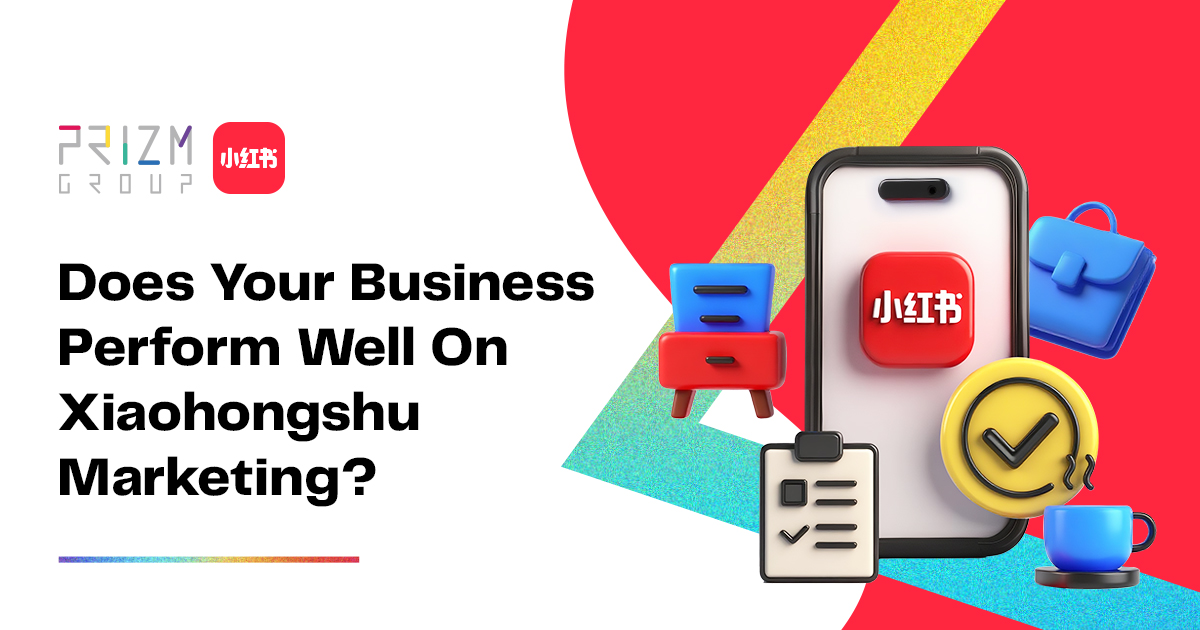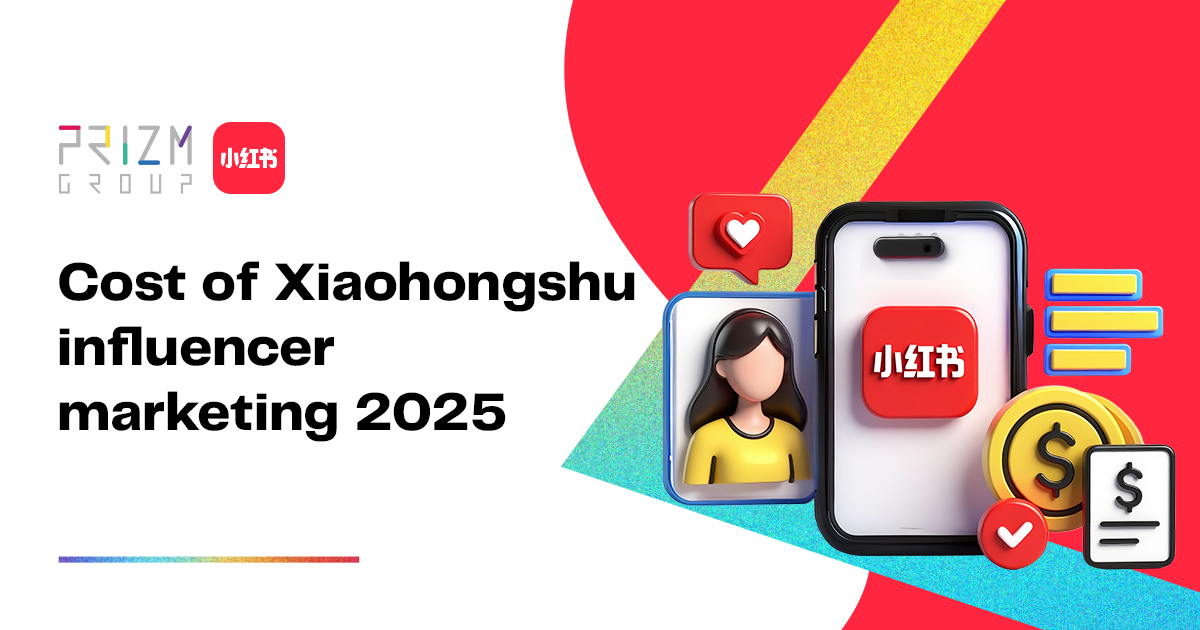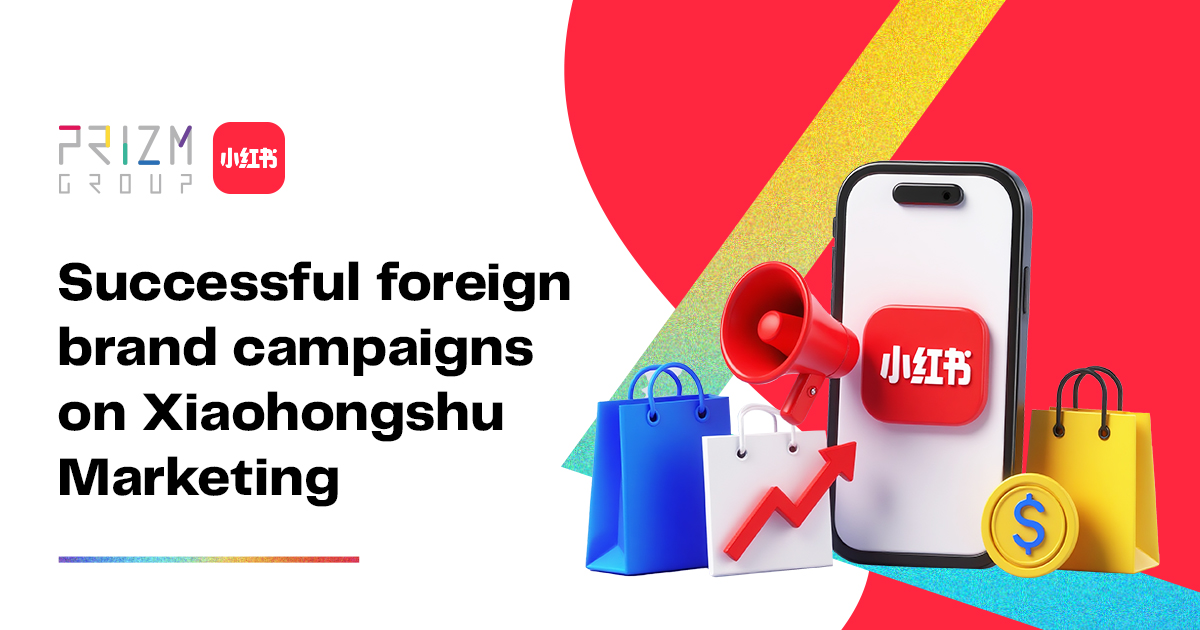China digital marketing trends 2025 B2C/B2B
As we step into 2025, China’s digital marketing scene shows no signs of slowing down. For both B2C and B2B brands, this market is full of opportunities, but it’s also more competitive and fast-changing than ever. What worked a few years ago may no longer be enough to reach today’s savvy Chinese consumers.
One platform that continues to play a big role in shaping how people discover and trust new products is Xiaohongshu, also known as Little Red Book. It’s no longer just for beauty or fashion brands; today, xiaohongshu marketing has become a crucial tool for all kinds of industries wanting to build credibility and word-of-mouth in China.
In this article, we at Prizm NZ & AU break down the key digital marketing trends driving results in China in 2025, and explain how brands, whether selling to everyday shoppers or business decision-makers, can make the most of Xiaohongshu and other platforms to stay ahead.
The Big Picture: China’s Digital Landscape in 2025
In 2025, China remains one of the most dynamic digital markets in the world, but also one of the most demanding. With over 1 billion internet users, Chinese consumers are more connected, informed, and selective than ever before. Whether they’re shopping for daily essentials or making serious business investments, they expect fast answers, peer opinions, and content that feels relevant to their lives.
For B2C brands, the big trend is still social commerce, where social content and online shopping blend into one. Short videos on Douyin (China’s version of TikTok) can turn a new snack flavour into a nationwide craze overnight. Livestream hosts on Taobao or Kuaishou can sell out an entire product batch within minutes. And of course, Xiaohongshu marketing has become essential for building trust, as millions of young consumers rely on peer reviews and user stories before buying.
At the same time, B2B brands can’t ignore these trends either. Many business buyers in China are millennials and Gen Z professionals who want the same engaging, bite-sized, and authentic information that B2C shoppers enjoy. They’ll read expert articles on Zhihu, watch demo videos on Douyin, join WeChat groups for private discussions, and even search Xiaohongshu for real user experiences with new technologies or services. This means a dry sales brochure alone won’t cut it anymore.
Several big shifts define China’s digital scene in 2025:
- Consumers crave authenticity. Polished ads feel distant; relatable stories and real customer voices carry more weight.
- Content drives action. A funny short video or an honest review can directly lead to a sale, especially when paired with in-app shopping links.
- Omnichannel is the norm. Brands must connect the dots: one customer might see a product on Douyin, research reviews on Xiaohongshu, ask friends on WeChat, and finally buy on Tmall.
- Private traffic is gold. Brands focus more on keeping loyal fans close, through WeChat groups, loyalty mini-apps, and VIP communities, to reduce reliance on paid ads.
All this means that xiaohongshu marketing is no longer optional for brands that want to win in China. Whether you sell skincare, electric cars, or software solutions, being part of Xiaohongshu’s trusted community can influence both everyday shoppers and business decision-makers.
Xiaohongshu Marketing: Why It Matters More Than Ever
Once seen mainly as a beauty and fashion sharing app, Xiaohongshu, or Little Red Book, has transformed into one of China’s most trusted lifestyle platforms. In 2025, it’s where millions of Chinese users discover what’s trending, read real reviews, and decide what’s worth spending money on.
Unlike flashy ads on other platforms, content on Xiaohongshu feels like advice from a friend. Users post “Notes”, short stories, photos, or videos, sharing honest experiences: how a skincare product worked, whether a new café is worth visiting, or how a gadget fits into daily life.
This “grass planting” (种草) effect is powerful. One genuine Note can spark thousands of saves, comments, and shares, building desire and trust without feeling forced. For brands, this means that xiaohongshu marketing works best when it’s about sparking conversation, not just pushing a hard sell.
Why does it matter so much in 2025?
- Consumer trust is fragile. Many shoppers ignore generic ads but will spend hours reading peer reviews before clicking ‘Buy’. Xiaohongshu sits at the centre of this research habit.
- It influences purchase decisions directly. A recent study shows over 40% of Xiaohongshu users search the platform to check a product’s real-life results before purchasing elsewhere, whether online or in-store.
- It attracts a high-value audience. Users are mostly young urban professionals with spending power, curiosity for new products, and a strong habit of sharing opinions.
- It’s expanding beyond beauty. Today, people use Xiaohongshu to research cars, tech gadgets, travel tips, health supplements, and even career-related services. For B2B, this means an opportunity to humanise a brand or show behind-the-scenes stories in a relatable way.
Example:
A New Zealand skincare brand launching in China can use Xiaohongshu marketing to seed its story. Instead of a plain product ad, the brand invites micro-influencers to share their day-to-night skincare routine featuring the product. Each post reaches real followers who trust that influencer’s daily life tips. Meanwhile, curious users searching “hydrating cream for sensitive skin” on Xiaohongshu will see these Notes pop up, giving the brand organic reach and credibility.
In short, if your goal is to build word-of-mouth, earn real recommendations, and stay top-of-mind in China, xiaohongshu marketing is a must-have in 2025.
Key Xiaohongshu Marketing Trends for 2025
To win on Xiaohongshu in 2025, brands need more than just a verified account and pretty pictures. The platform evolves fast, and staying relevant means knowing what type of content and tactics work right now. Here are four big trends shaping effective xiaohongshu marketing this year, along with practical scenarios:
Micro-Influencers Lead the Way
Big celebrities still attract attention, but more brands now focus on micro-influencers and KOCs (Key Opinion Consumers). Why? Because their smaller, niche audiences trust them more.
Scenario:
A craft coffee brand entering China partners with 50 micro-influencers who share honest brewing tips and tasting notes at home. Each post feels real, not like a paid commercial, and together they flood the platform with relatable mentions. Instead of relying on one big name, the brand benefits from many authentic voices.
Branded Communities and Co-Creation
Xiaohongshu’s strongest pull is community, people love to share experiences and learn from others. In 2025, successful brands invite followers to co-create content or join brand-run interest groups.
Scenario:
A sustainable fashion label launches a “Styling Club” on Xiaohongshu. They post mix-and-match challenges and encourage followers to share their own outfits using the brand’s pieces. The best looks get featured on the brand’s official Notes, making users feel seen and turning them into unpaid brand ambassadors.
Social Commerce Made Seamless
More Xiaohongshu users shop directly inside the app now, no more jumping to a separate site. In 2025, smart brands link product tags, in-app shops, and flash sales to turn interest into quick conversions.
Scenario:
A wellness brand drops a limited-edition collagen drink. They tease it through Notes by KOLs, then host a mini live stream to answer questions. Viewers can tap to buy on the spot, with exclusive bundles only for Xiaohongshu fans.
AI Tools & Authenticity Filters
As fake reviews remain a concern, Xiaohongshu’s AI system gets better at flagging suspicious content. Meanwhile, brands use AI too, to find trending topics, optimise post timing, and generate ideas for user questions.
Tip:
Rely on real user stories, not fake buzz. When people see honest before-and-after photos, detailed captions, and comments from actual buyers, they’re more likely to trust and share your content, boosting your organic reach naturally.
Together, these trends show that xiaohongshu marketing in 2025 is about building relationships, not just blasting ads. Brands that join conversations, empower their community, and stay transparent see better results.
How Xiaohongshu Differs for B2C vs B2B
Most people think of Xiaohongshu marketing as a go-to for B2C brands, and it’s true that beauty, skincare, fashion, food, and lifestyle products shine here. But more B2B companies are also finding smart ways to use the platform to build trust and credibility.
Let’s break it down:
B2C on Xiaohongshu
For B2C, Xiaohongshu is like a living, breathing search engine for authentic reviews and inspiration. Users scroll Notes to see real results, unboxing experiences, and styling ideas, all before spending a single yuan.
What works well:
- Visual storytelling (before/after, lifestyle shots)
- Micro-influencer seeding to generate buzz
- How-to Notes and honest product diaries
- Linking posts to in-app shops for instant shopping
Example:
A new organic shampoo brand invites everyday users to share hair wash tutorials and scalp care tips. Each Note highlights how the shampoo fits into a daily routine, more convincing than a glossy billboard.
B2B on Xiaohongshu
Surprisingly, professionals and business buyers use Xiaohongshu too, not just for shopping, but to check a company’s credibility and see how its product works in real scenarios.
What works well:
- Behind-the-scenes Notes: show your team, tech, or project case studies in a friendly tone
- Explainer Notes: break down complex products in plain language
- Thought leadership: share industry tips, answer common client questions
- Subtle influencer collabs: niche creators explaining how they use your service
Example:
A cloud software company shares a Note explaining how small startups can automate sales tasks. They use simple diagrams, an easy tutorial video, and real client stories, making technical content feel human and trustworthy.
Key Difference:
- B2C aims to spark quick desire and direct purchases.
- B2B focuses on building reputation and educating potential clients, so that when decision-makers discuss options internally, your name comes up first.
In short, whether you sell face masks or SaaS tools, xiaohongshu marketing can support your brand, as long as you adapt your content style to match how people naturally use the app.
Practical Tips for Succeeding with Xiaohongshu Marketing in 2025
So you know why Xiaohongshu matters, now, how do you actually win on this platform in 2025? Here are practical, tried-and-tested tips to guide your xiaohongshu marketing plan, whether you’re B2C or B2B:
Focus on Localised, Relatable Stories
Don’t just translate your global ad and call it a day. Chinese users want Notes that feel genuine and close to daily life. Use everyday scenarios, local slang (where appropriate), and visuals that match local tastes.
Tip: Instead of “Our new blender is powerful,” post “How I make my breakfast smoothie in under 30 seconds before rushing to the office.”
Work with the Right Influencers
On Xiaohongshu, trust comes first. Micro-influencers and KOCs (real users with small but loyal followings) often outperform big names. Pick partners whose audience matches your target customers, not just anyone with high follower counts.
Tip: Check past posts and engagement quality before signing any deals. Authentic creators are better at driving saves and shares.
Optimise Your Covers and Captions
A Note’s cover photo and headline decide whether people click or scroll past. Use bright, clean images, and short titles that hint at a benefit or interesting story.
Tip: Many top-performing Notes use text overlays on images, like “Daily Outfit Ideas for Office Girls” or “How I Cleared My Skin in 2 Weeks”.
Mix Formats: Image, Video, and Long Notes
Different users like different formats:
- Image Notes: Quick to make and easy to scroll.
- Video Notes: Great for demos and building a friendly vibe.
- Long Text Notes: Ideal for detailed how-tos, checklists, or honest reviews, these rank well in Xiaohongshu’s internal search.
Test what your audience saves and comments on most, then double down.
Stay Compliant and Keep It Real
Xiaohongshu’s algorithm gets smarter every year. Fake reviews and over-promises get flagged fast. Disclose sponsored content clearly, avoid unrealistic claims, and encourage real customers to share honest feedback.
Tip: Add a gentle CTA in your Note: “💡 Save this post so you don’t lose it!”, this boosts your Note’s save rate, which the algorithm loves.
In a nutshell, xiaohongshu marketing in 2025 is about blending authenticity, creativity, and local insights. Do it right, and your Notes become free word-of-mouth ads that keep working long after your campaign ends.
Final Thoughts: Embracing the Future of Xiaohongshu Marketing
China’s digital landscape in 2025 demands more than just eye-catching ads, it rewards brands that build trust, tell real stories, and create value for their audience. Xiaohongshu marketing sits at the heart of this shift.
For B2C brands, it’s a proven way to turn genuine user posts into long-lasting word-of-mouth. For B2B brands, it’s an underrated chance to humanise your company, share real expertise, and quietly influence decision-makers who value authenticity over corporate jargon.
At Prizm NZ & AU, we believe brands that treat Xiaohongshu as a community, not just a sales channel, see the best results. Start with listening: what do your future customers care about? Next, join their conversation with content that’s useful, relatable, and true to your brand voice.
With the right approach, xiaohongshu marketing can become your competitive edge in China’s crowded digital space, helping you stay trusted, visible, and ready for what comes next.
Want tailored advice for your brand’s China strategy?
At Prizm NZ & AU, we help B2C and B2B companies turn local insights into real results. Reach out anytime to plan your next step in China.




